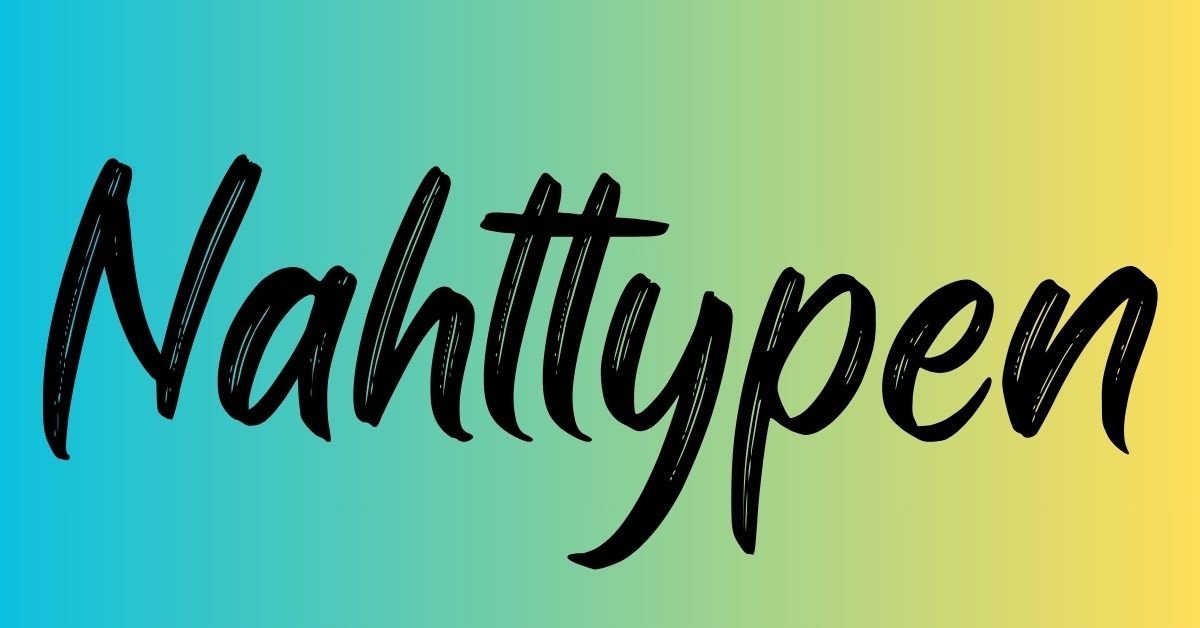Seams, or “Nahttypen” in German, are essential components in textiles and garment construction. These are the joints where two or more layers of fabric are stitched together. The choice of seam type plays a crucial role in the durability, appearance, and functionality of the final product. Whether you’re a fashion designer, tailor, or sewing enthusiast, understanding seam types helps improve craftsmanship and garment quality.
Importance of Nahttypen Selection
Every seam has a purpose. Some are designed for strength, others for flexibility, aesthetics, or to prevent fraying. Selecting the correct seam type ensures that the garment or product performs well under its intended use. For example, activewear needs stretchable seams, while a leather bag demands strong, rigid ones.
Plain Nahttypen
The plain Nahttypen is the most basic and commonly used seam. It involves placing two fabric pieces right sides together and stitching along the edge. After stitching, the seam allowances are usually pressed open. It’s ideal for lightweight to medium fabrics and found in almost every kind of garment.
French Nahttypen
This seam encloses raw edges, making it ideal for delicate and sheer fabrics. The process involves stitching the fabric wrong sides together, trimming the allowance, turning it inside out, and sewing again. It produces a neat, clean finish perfect for lingerie or blouses.
Flat-Felled Nahttypen
A flat-felled Nahttypen is known for its strength and durability. Commonly used in jeans and heavy-duty garments, this seam involves folding and stitching the seam allowance so that no raw edges are exposed. It creates a flat finish on both sides of the fabric, making it comfortable and long-lasting.
Double-Stitched Seam
This seam provides extra strength by sewing two lines of stitches. It’s used in high-stress areas like armholes or trousers. The double stitching helps prevent seam slippage and ensures a clean, tailored appearance.
Bound Seam
Bound seams are used to finish raw edges with bias tape or binding fabric. They are decorative and functional, often found in unlined jackets, bags, or interior seams where aesthetics matter. This seam type is excellent for adding a pop of color or contrast.
Lapped Seam
In a lapped seam, one piece of fabric is lapped over the other and stitched. It’s mostly used in leather or non-fraying materials. This type of seam adds a unique design element and is often visible on the outside of the garment.
Mock French Seam
A mock French seam imitates the look of a real French seam but is quicker to make. It involves sewing a plain seam, pressing it open, folding each raw edge under, and stitching them down. This technique gives a tidy finish with less effort.
Welt Seam
Welt seams offer strength and a decorative look. These seams involve sewing two layers together and then topstitching one side. They’re often seen in tailored jackets and pants, adding both structure and visual interest.
Slot Seam
Slot seams are decorative and involve inserting a strip of fabric between two fabric pieces. The top fabric is stitched on either side of the slot, exposing the fabric underneath. It’s commonly used in design-focused garments.
Flat Seam
Flat seams are formed by placing fabric edges together and using overlock or cover-stitch machines. These seams lie flat and are often used in sportswear to minimize irritation and maximize comfort.
Zigzag Nahttypen
Zigzag Nahttypen are not actual seams but refer to the stitch style used on seams to allow stretch. It’s often applied to knit fabrics where flexibility is needed. This type of stitching prevents breakage when the fabric stretches.
Serged Nahttypen
Serging involves cutting the fabric edge and enclosing it with thread in one motion using a serger machine. Serged seams are neat, fast, and prevent fraying, making them ideal for fast-paced garment production.
Decorative Nahttypen
Decorative seams are intentionally visible and creatively styled to enhance the garment’s look. These can be combinations of stitches, trims, and folds, giving a unique, stylish edge to any piece.
Overlocked Nahttypen
Overlocked seams bind the fabric edges with an overlock stitch, commonly used in ready-to-wear garments. It gives a professional finish and prevents fraying, especially with stretchy or knit fabrics.
Seam Placement and Design Consideration
Where you place a seam affects the fit and design of a garment. For example, princess seams shape the bust, while side seams impact overall fit. Designers must strategically plan seams to balance style, structure, and comfort.
Impact of Fabric Type on Seam Choice
The fabric’s texture, weight, and stretchability influence the suitable seam type. Lightweight fabrics require delicate seams like French or mock French seams, while heavy fabrics need durable ones like flat-felled or lapped seams.
Sewing Tips for Better Seams
Always press seams during construction. Use the appropriate needle and thread type for your fabric. Practice on scraps to test tension and stitch settings. Neatness and consistency are key to high-quality seams.
Conclusion
Nahttypen are more than just fabric joins; they shape the garment’s strength, comfort, and style. Understanding different “Nahttypen” equips you with the knowledge to choose wisely, create better garments, and elevate your sewing skills. Whether for everyday clothing or designer pieces, mastering seam types is fundamental for every sewing journey.
FAQs
What is the strongest type of seam?
Flat-felled seams are among the strongest and are commonly used in denim and workwear due to their durability.
Which seam is best for sheer fabrics?
French seams are ideal for sheer and delicate fabrics as they enclose raw edges and prevent fraying.
Can I use decorative seams in everyday clothing?
Yes, decorative seams can enhance everyday garments by adding unique design elements without compromising function.
What’s the difference between serged and overlocked seams?
They are essentially the same—both refer to using an overlock machine to finish and secure fabric edges.
Are bound seams only for decoration?
No, bound seams also protect raw edges and add durability while offering a decorative finish.
